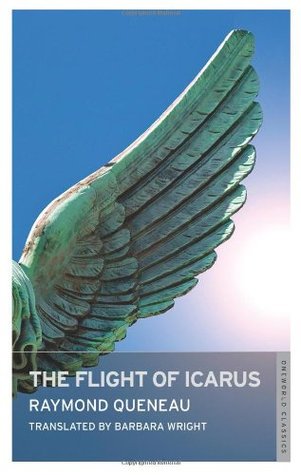One of the most famous works by the French writer, Raymond Queneau, is Exercises In Style (1947), a fiction with the slightest of plots. So slight, the whole story can be summarised in a few sentences, and it wouldn’t be a spoiler to say that the narrator boards the ‘S’ bus, spots a minor conflict between one man – noting particularly his long neck and odd hat – and another passenger, spotting him again two hours later getting advice on a button for his overcoat. Yes, that slight.
It’s not, however, the story that matters as much as the conceit of the book. As the title implies, the book is a series of experiments, taking the same story over and over and presenting it in no less than ninety-nine different ways. To other writers it seems there’s a certain attraction to it, what with some well known writers translating and adapting the book to their own tongue, notably Umberto Eco (to Italian), Patrik Ouředník (to Czech), and Danilo Kiš, to (Serbian).
In her foreword, the translator Barbara Wright notes that the idea came to Queneau after attending a performace of Bach’s The Art Of Fugue. (“What particularly struck Queneau about this piece was that, although based on a rather slight theme, its variations ‘proliferated almost to infinity.’ It would be interesting, he thought, to create a similar work of literature.”) She also notes that although he stopped at ninety-nine exercises, a later French edition went on to list a further 140 potential exercises.
Each exercise comes with a title descriptive of the stylistic challenge. These offer up a range of different ideas, many representing linguistic ideas such as parachesis, with others forcing more wide ranging constrictions, such as the consistent use of metaphors, colours, or medical terms. One such exercise, Retrograde, tells the story in reverse:
You ought to put another button on your overcoat, his friend told him. I met him in the middle of the Cour de Rome, after having left him rushing avidly towards a seat. He had just protested against being pushed by another passenger who, he said, was jostling him every time anyone got off. This scraggy young man was the wearer of a ridiculous hat. This took place on the platform of an S bus which was full that particular midday.
In the production of so many variations Queneau has obviously had a great deal of fun and the humour flows through the whole book. The premise of Precision has the story told with an over the top level of detail (“In a bus of the S-line, 10 metres long, 3 wide, 6 high, at 3km. 600m from its starting point, loaded with 48 people, at 12.17 p.m…”) while the brilliance of Homeoptotes is in the repetition of a single sound (“On a certain date, a corporate crate on which the electorate congregate when they migrate at a great rate, late…”).
When the exercises work with a simple idea the effect can be witty and varied enough to maintain interest. However, there are times when the exercise looses any sense of coherence and it becomes hard to wonder at the benefit of writing in that particular style. A series of exercises presenting the story in permutations of letter seems meaningless and undecipherabl, like in this opening paragraph using permutations of two letters:
Ed on to ay rd wa id sm yo da he nt ar re at pl rm fo an of us sb aw is ou ay ma ng ho nw ne se wa ck oo st ng lo dw an wa ho ea sw ng ri at ah th wi la ap ro it dt un sa he me.
Even if an exercise confuses, and some certainly do, the brevity of them ensures that a new idea is just a page turn away. One of the longest, Opera English, presents the story in two acts with all the pomposity of the art, while one of few flirtations with poetic forms sees, in Haiku, the story told in the most concise of details:
Summer S long neck
plait hat toes abuse retreat
station button friend
The exercises in this English translation sometimes adhere to the French originals, while others deviate from the mould. It would, as Wright notes, be a futile task to translate to English, an exercise already in English, and in this she is also party to the fun, freely lifting, as she admits, from Sam Selvon’s The Lonely Londoners for an exercise in a West Indian dialect. As an example of Oulipo, it’s no wonder that Exercises In Style was the work Queneau most wanted to see translated – the potential for literature like this, in any language, helps achieve the proliferation almost to infinity that he initially set out to do.
In writing Exercises In Style, the hurdle in how to end it, to ensure a robust ninety-nine, must surely have been entertained by Queneau. After repeating the same story for page after page, be it as a sonnet, antiphrasis, or the triptych of prosthesis, epenthesis, and paragoge, it needs an acceptable conclusion and Queneau delivers a welcome twist, just the thing for an exercise titled Unexpected. Understandably, the book doesn’t add up to much, but as a document of how tackling a subject from myriad angles opens up a story to countless possibilities, it is indispensible.

Even if it “doesn’t add up to much” it sounds quite interesting.
Oh it is. Sad to say that the translator, Barbara Wright, passed away last week ahead of a revised edition.
Jeez, that looks like hard work.